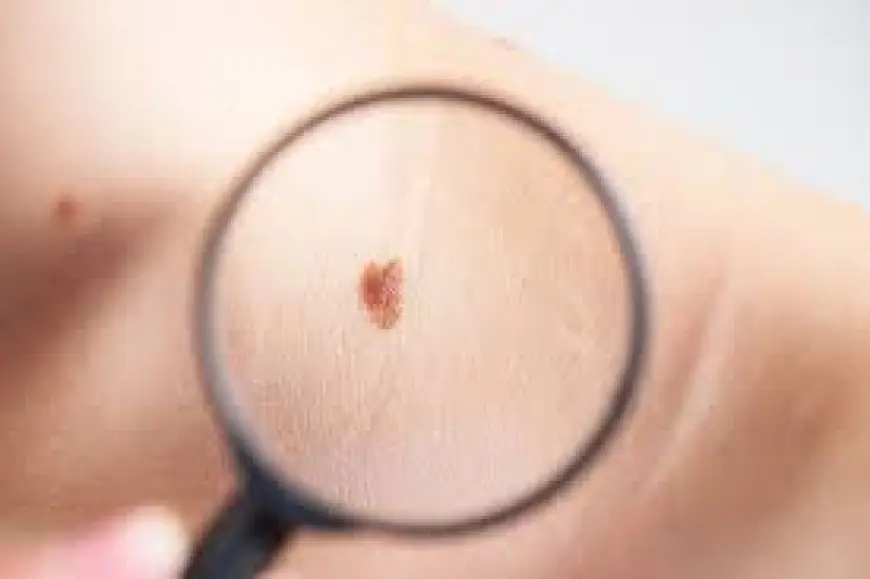How to Identify Early Signs of Skin Cancer Spots
Learn how to spot early signs of skin cancer spots, their types, risk factors, and prevention tips to stay protected and ensure timely medical intervention.

Skin cancer is one of the most common types of cancer worldwide, and while it can be life-threatening, it is also highly treatable when detected early. Early identification of skin cancer spots can drastically improve treatment outcomes, making awareness and vigilance essential. Knowing what to look for and when to seek help can make a crucial difference in your health journey.
In this article, we’ll guide you through the early warning signs of skin cancer spots, how they differ from harmless blemishes, and what steps you can take to protect yourself and your loved ones.
What Are Skin Cancer Spots?
Skin cancer spots are abnormal growths or changes in the skin’s appearance, typically caused by uncontrolled growth of skin cells. They can manifest as new spots, changes to existing moles, or unusual textures and colors on the skin’s surface. Most of these spots are found on areas frequently exposed to the sun—like the face, arms, neck, and legs—but they can also appear in less exposed areas such as the soles of the feet, under fingernails, or even on the scalp.
There are three main types of skin cancer that cause visible skin changes:
-
Basal cell carcinoma (BCC)
-
Squamous cell carcinoma (SCC)
-
Melanoma (the most dangerous form)
Each presents differently, and understanding their early signs is vital for early intervention.
The ABCDE Rule for Identifying Melanoma
Dermatologists often use the ABCDE rule to help people recognize warning signs of melanoma. Here’s what each letter stands for:
-
A – Asymmetry: One half of the mole or spot is unlike the other.
-
B – Border: Edges are irregular, ragged, notched, or blurred.
-
C – Color: Uneven color with shades of black, brown, tan, or even white, red, or blue.
-
D – Diameter: The spot is larger than 6mm (about the size of a pencil eraser), although melanomas can be smaller.
-
E – Evolving: Any change in size, shape, color, or symptoms (itching, bleeding, etc.).
Any spot or mole that meets one or more of these criteria should be examined by a dermatologist promptly.
Early Signs of Basal Cell Carcinoma (BCC)
Basal cell carcinoma is the most common but least aggressive type of skin cancer. It often appears as:
-
A shiny, pearly bump
-
A pink growth with raised edges and a sunken center
-
A sore that doesn’t heal or keeps returning
-
A flat, flesh-colored or brown scar-like lesion
BCC typically develops slowly and rarely spreads, but it can damage surrounding tissues if left untreated.
Early Signs of Squamous Cell Carcinoma (SCC)
SCC is more aggressive than BCC and can spread if not treated. Its early signs include:
-
A red, scaly patch or sore that may crust or bleed
-
A wart-like growth
-
A persistent, thick, rough patch on sun-exposed skin
-
An open sore that doesn’t heal
SCC can develop from actinic keratosis—precancerous spots caused by sun damage—so early detection is key.
Risk Factors for Skin Cancer Spots
Understanding your risk factors can help you stay proactive in monitoring your skin. Common risk factors include:
-
Excessive sun exposure or tanning bed use
-
Fair skin, freckles, and light-colored eyes
-
A history of sunburns, especially blistering burns
-
Family history of skin cancer
-
Weakened immune system
-
Presence of many moles or unusual moles
-
Age over 50
If you fall into one or more of these categories, regular skin checks are highly recommended.
How to Perform a Self-Exam
A self-exam can be your first line of defense against skin cancer. Follow these steps monthly:
-
Use a full-length mirror in a well-lit room.
-
Check your entire body, including less obvious areas: between toes, soles, back, scalp, underarms, and behind ears.
-
Note any changes in moles or new spots.
-
Use a hand mirror for hard-to-see areas or ask a family member for help.
Photograph suspicious spots to track changes and bring them to your dermatologist’s attention.
When to See a Dermatologist
See a dermatologist if you notice:
-
A new mole or spot that looks different from others
-
Any mole or spot that changes over time
-
Itching, bleeding, or crusting without injury
-
Sores that don’t heal within a few weeks
It’s always better to be cautious—dermatologists are trained to distinguish between benign and malignant growths.
Tips to Prevent Skin Cancer Spots
While not all skin cancer is preventable, there are several measures you can take to reduce your risk:
-
Use sunscreen with SPF 30 or higher every day, even when it’s cloudy
-
Avoid tanning beds and sunlamps
-
Wear protective clothing: wide-brimmed hats, sunglasses, and long sleeves
-
Seek shade between 10 AM and 4 PM
-
Perform monthly skin checks
-
Schedule annual skin exams with a dermatologist
By incorporating these habits into your routine, you can significantly reduce your risk of developing skin cancer.
Conclusion
Recognizing the early signs of skin cancer spots is not just a matter of awareness—it can be lifesaving. By understanding what to look for and performing regular skin checks, you increase your chances of early detection and successful treatment. Whether you’re concerned about a particular spot or simply want to stay informed, taking action today could protect your health for years to come.
What's Your Reaction?
 Like
0
Like
0
 Dislike
0
Dislike
0
 Love
0
Love
0
 Funny
0
Funny
0
 Angry
0
Angry
0
 Sad
0
Sad
0
 Wow
0
Wow
0
















































